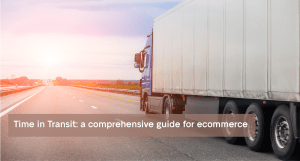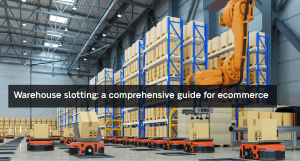Even though it may still look like science fiction, drone delivery can be the future of logistics. At least this is what Jeff Bezos believes! With Amazon working on autonomous drone delivery, and announcing to extend existing operations beyond the US, particularly in the UK and Italy, drone delivery is on the horizon. As this technology continues to evolve, it holds the promise of revolutionising the delivery sector. Let’s discover more about drone delivery in logistics, its benefits and challenges.
What is drone delivery?
Drone delivery, in other words the use of drones to deliver goods that range from essential items like medications to everyday products and food, has been a topic of exploration and development for many years. These services, also referred to as “courier drones” or “cargo drones”, are being tested in various countries. Delivery drones vary in characteristics and suitability for different tasks. For instance, some drones are designed to carry heavier loads, while others are built for longer distances or to transport supplies to remote or hard-to-reach areas.
The development of drone delivery services signifies a shift towards more innovative and technologically advanced logistics solutions, offering a glimpse into the future of transportation and delivery services all over the world.
Pros and cons of drone delivery
Complex regulations
A notable challenge regarding the employment of drone delivery is the complex regulatory landscape that governs its usage. Various countries have stringent rules on drone activities, like limitations on flying zones, flight heights, and comprehensive safety measures. Moreover, operators are frequently required to register their drones and obtain necessary licences and certifications. This complicates the logistics of delivery, making it less easy than it may initially appear.
Adverse weather conditions
Most modern drones depend on weather conditions. In fact, many of them can’t fly in case of strong winds, hail or thunderstorms. In fact, drones are typically made of electrical components, motors, flight controllers, and batteries that can be easily damaged by bad weather conditions. Sudden changes in weather can interfere with a drone’s GPS signal and radio communication, resulting in destruction, loss, damage, and ultimately, more complex logistical operations.
General public
Another challenge in adopting drone delivery on a larger basis will be reassuring the general public about the safety of this service. Many people are worried about drones as a new delivery method and others aren’t happy with the idea of having these objects fly near their windows carrying their neighbour’s orders or having packages land in their gardens.
Expensive
Currently, regulations in most countries and regions make drones an expensive technology to adopt. In fact, these regulations state that only one operator per drone is allowed and that a visual observer must monitor the airspace in which the drone flies. A McKinsey report (2023) estimates that a single-package drone delivery has a direct operating cost of approximately $13.50, which is not yet competitive with electric vehicles or other types of vehicles doing multiple deliveries in a single road trip.
For drones to become a cost competitive solution, operators will need to be able to observe airspace and operate multiple drones at the same time. This would include the adoption of autonomous drone flight with limited human intervention, unmanned traffic management systems, and sense-and-avoid solutions.
Even though these challenges are difficult to overcome and therefore it may be years before this technology becomes widespread, many companies are working on improving this service that could greatly impact the future of logistics. Let’s discover a few advantages of adopting drone technology for deliveries.
Less environmental impact
Drones can be adopted for the last mile of the delivery stage. Compared to other traditional delivery methods, including home delivery, drones produce fewer emissions and reduce the amount of vehicles on the road. This will largely contribute to having less congested and polluted cities. Drones fly without releasing emissions during their operations, and are able to take direct routes to their destinations, positioning them as a forward-thinking solution for sustainable business operations.
Fast and efficient
Drones present a huge opportunity in increasing efficiency of logistics operations while protecting the planet. Because they can easily avoid traffic and don’t need roads to reach their destinations, drones are perfect solutions to offer faster deliveries even in remote areas.
Uses for drone delivery services
Fulfillment
Drones can support and increase efficiency of typical tasks carried out in fulfillment centres or warehouses, like picking and packing items for customer orders. Since they operate autonomously, they reduce costs and risk of errors of manual operations.
Last mile
Drones can increase order delivery frequency, especially for small and medium sized packages. If they cover short distances, drones are incredibly efficient at delivering directly to customers’ doorsteps. Compared to trucks, their cost per trip is potentially much lower because they work with electricity which is relatively inexpensive.
Conclusions
While the widespread adoption of delivery drones might seem possibly only in decades, logistics companies are constantly innovating to turn this vision into reality. Adopting drone delivery services holds immense potential, particularly if solutions are found for the current technological and regulatory hurdles. The advantages for the planet alone make this pursuit worthwhile. As drone delivery technology advances, it could become an economically affordable option for businesses that has the potential of redefining how we think about shipping and receiving goods in the future.






